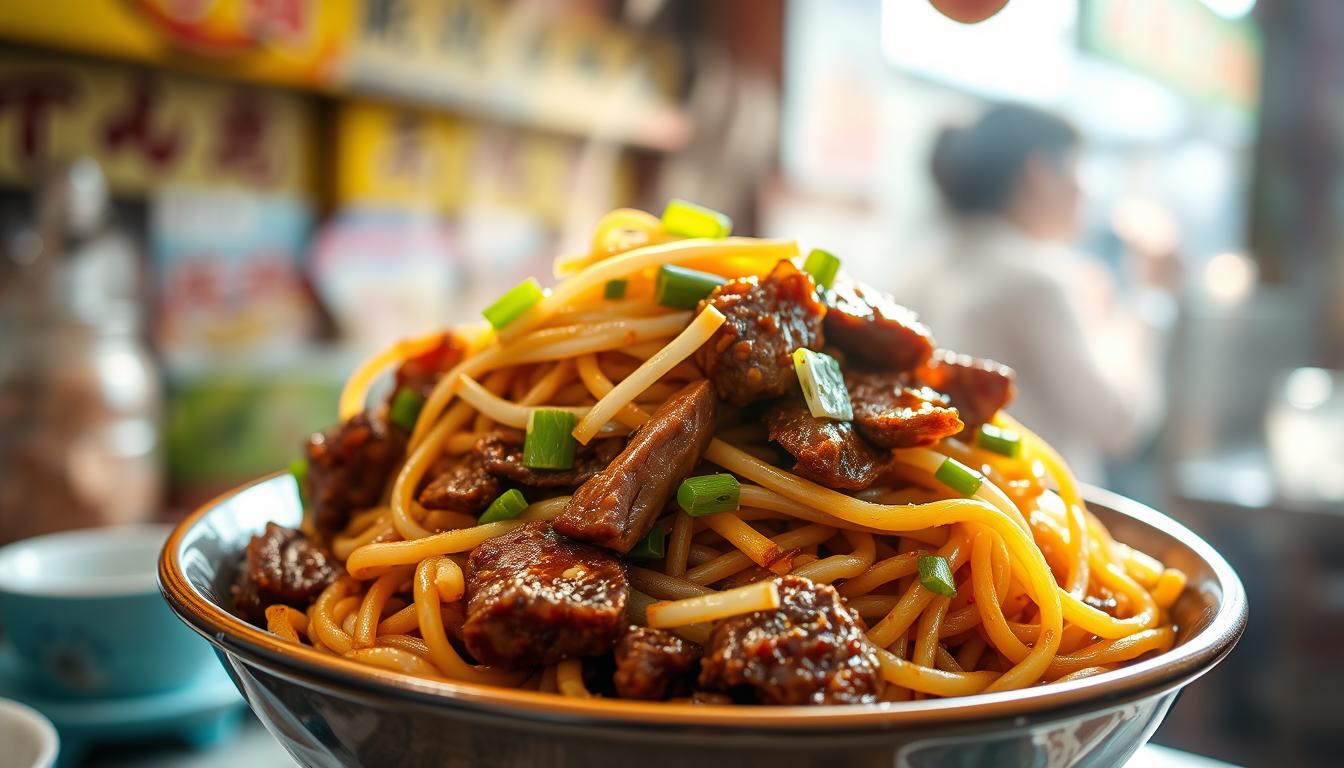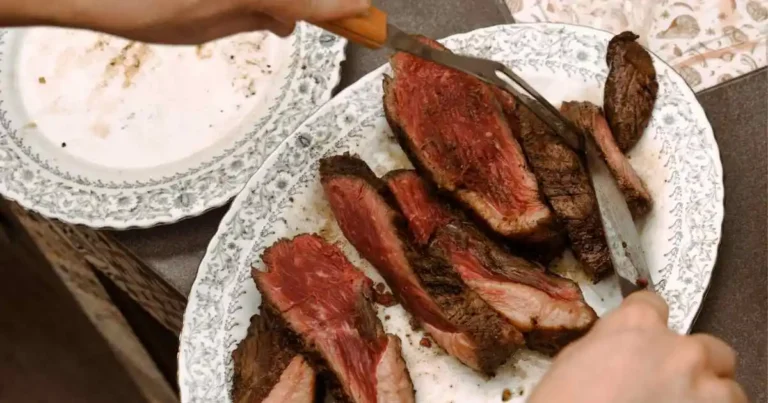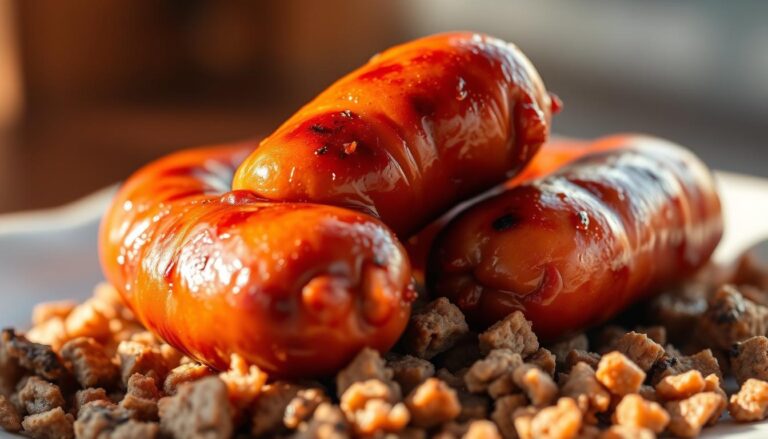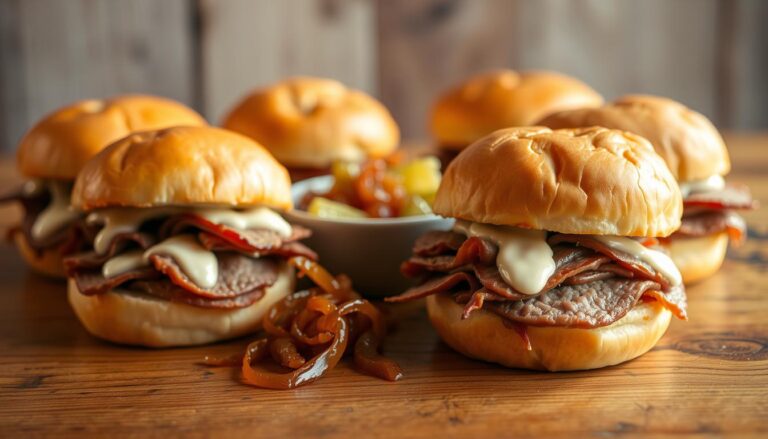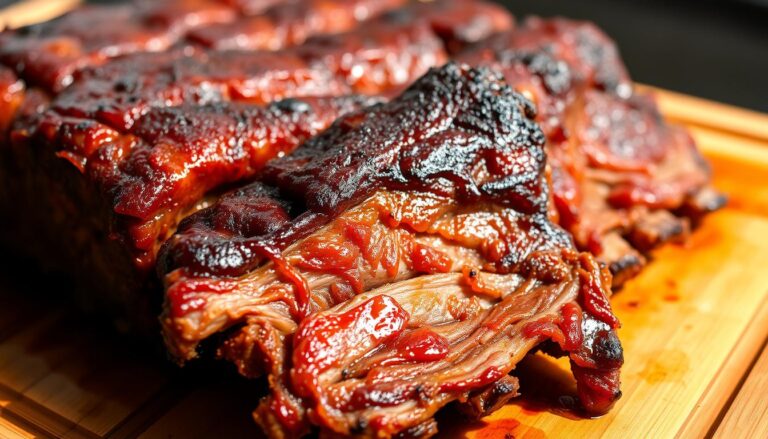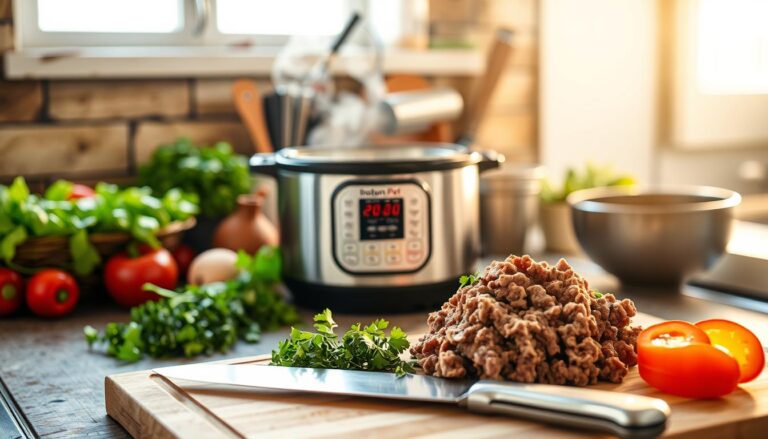How to Make Authentic Chow Fun: A Step-by-Step Guide
You might remember the first time a plate of wide rice noodles stole the show — the sizzle, the sear, the scent that felt like a small celebration at your own table.
This guide helps you bring that restaurant-quality beef chow fun home with clear steps that respect tradition and suit a regular kitchen. You’ll learn why extra wide rice noodles and a quick, high-heat stir create the prized wok hei and why the sauce should just coat the strands, not drown them.
In about 30 minutes, you can prep tender beef with a brief baking soda and cornstarch marinade, sear noodles for texture, and finish with a savory mix of light and dark soy, oyster sauce, and a touch of Shaoxing wine.
Read on to get confident with heat control, equipment swaps, and simple finishing touches so your noodles shine the moment they hit the plate.
Why You’ll Love This Chow Fun at Home
A quick, high-heat method gives you bold flavor without fuss. In about thirty minutes you’ll build texture, heat, and balance that make this dish dependable for weeknights or gatherings.
What you can expect in 30 minutes
What you can expect in 30 minutes
You’ll finish this chow fun in roughly 30 minutes when you organize your prep. Marinate the beef with baking soda and cornstarch while you separate or soak the rice noodles and measure the sauce.
The flavor profile: savory soy, gentle sweetness, peppery bite
The core taste comes from light soy, dark soy, oyster sauce, a pinch of sugar, and a splash of Shaoxing wine. This mix coats the noodles lightly so the dish stays dry-style and not greasy.
- You’ll get tender beef from a short cornstarch and baking soda marinade.
- High heat and a roomy wok prevent steaming and create charred edges on the noodles for extra aroma.
- A neutral oil lets you sear without off flavors, and just enough sauce keeps the plate balanced.
- Pick classic Cantonese dry stir-fry or a Hawaii local-style version with extra vegetables and black pepper.
Chow Fun vs. Ho Fun: Noodles, Names, and Regional Differences
Different regions use the same wide rice noodle but turn it into distinct plates with subtle shifts in seasoning and texture.
What “fun” means and why wide rice noodles matter
“Fun” refers to the wide, flat rice noodles that define the dish’s texture. These broad strands hold a light coating of sauce and develop a desirable char under high heat.
Extra wide rice noodles resist breaking and deliver a chewy bite. They also carry sauce differently than thin rice sticks. That makes them non-negotiable for authentic results.
Dry-style Cantonese vs. Hawaii local-style
Cantonese dry stir-fried beef chow fun uses minimal sauce. The aim is a clean, lightly coated noodle and noticeable wok char.
Hawaii’s local-style sits between saucy and dry. It adds soy, oyster, garlic, bold black pepper, and more vegetables like cabbage and bean sprouts. The result is heartier and pepper-forward.
| Feature | Cantonese (Dry) | Hawaii Local | Noodle Prep |
|---|---|---|---|
| Sauce Intensity | Light, subtle | Moderate, peppery | Fresh: separate and toss |
| Add-ins | Minimal (scallion) | Cabbage, carrots, sprouts | Dried: soak to pliable |
| Texture Goal | Wok hei, dry-style | Saucy edge, crisp veggies | Keep wide rice intact |
Essential Ingredients: From Wide Rice Noodles to Soy and Oyster Sauce
Before you heat the wok, collect the noodles, beef, aromatics, and a compact sauce mix. Good mise en place keeps the high-heat stir simple and fast.
Noodles: fresh vs. dried extra wide rice noodles
Choose extra wide rice noodles for chew and sauce pickup. Fresh, vacuum-sealed strands separate easily and need just a toss of oil. Dried noodles require soaking so they rehydrate without tearing.
Beef and tenderizers: baking soda, cornstarch, and pepper
Select flank, sirloin, skirt, or ribeye for balance of fat and flavor. Lightly treat slices with baking soda and cornstarch to keep beef velvety during the quick sear.
Season with white or black pepper for the finish you prefer.
The sauce essentials: light soy, dark soy, oyster sauce, sugar, Shaoxing wine
Build a compact sauce from light soy, a splash of dark soy for color, oyster sauce for umami, a pinch of sugar, and Shaoxing wine or dry sherry. Mix this ahead so the pan never waits.
Vegetables and aromatics: onions, scallions, garlic, bean sprouts
Stock yellow onions, scallions, and garlic to layer savory notes. Add mung bean sprouts for crunch; for a local-style spin, include cabbage and carrots.
- Use a neutral oil that stands up to heat without adding off flavors.
- Measure everything into tablespoons or small bowls so you can move through the stir-fry without pause.
How to Prep the Noodles Like a Pro
Prep the noodles so they move smoothly through the wok and pick up just the right amount of sear.
Fresh wide rice noodles: Gently separate the strands into a bowl. Toss with a small drizzle of neutral oil to prevent clumping. Set the bowl near the stove so you can quickly add noodles when the pan is ready.
Dried rice noodles: Soak in room-temperature water up to 1 hour or in very hot water for 10–15 minutes until pliable but not mushy. Test a strand: it should bend without breaking and still feel slightly firm. Drain well to remove excess water.
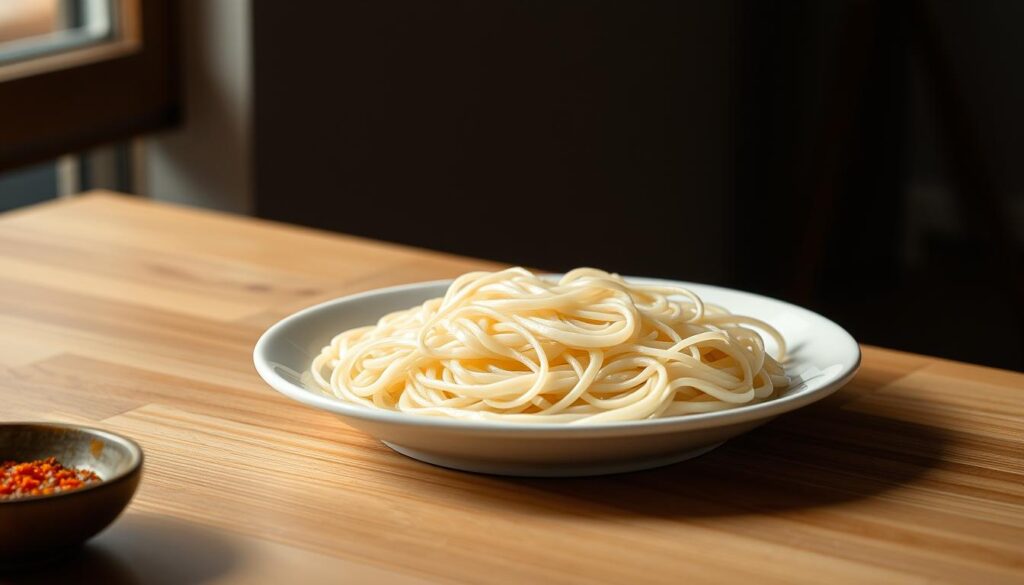
“The noodle should be flexible enough to fold but not so soft that it falls apart in the pan.”
Drain completely; excess water causes steaming and splatter. When you add noodles to the hot oil, handle them gently to avoid tearing. Give extra-wide noodle strands room in the pan so they char lightly and keep their texture.
- Do not boil dried noodles; soaking yields better texture.
- Keep timing tight: have noodles ready a few minutes before you start cooking.
- Use visual cues—slight translucency and flexibility—to know when to add noodles to the wok.
Beef Prep and Velveting Technique for Tender Bites
Prep your beef with a quick velveting step so each bite stays tender under high heat.
Slice against the grain into thin strips from flank, sirloin, skirt, or ribeye. Cutting this way shortens muscle fibers so the meat feels softer after searing.
Make a simple marinade: light soy, a pinch of baking soda, 1–2 tablespoons cornstarch, a splash of oil, and a little white or black pepper. Mix in a bowl and toss the beef until each strip is lightly coated.
Let the meat rest for 10–20 minutes. Baking soda raises surface pH and slows protein tightening. Cornstarch forms a thin shield that locks in juices during a fast sear.
Cook in hot batches, searing each strip 1–2 minutes per side. Set aside seared beef briefly, then return it to the pan with noodles and sauce for the final toss.
“A brief velveting step keeps lean beef silky without masking its flavor.”
| Step | What to Do | Why it Matters |
|---|---|---|
| Slice | Thin strips, against grain | Shorter fibers = more tender bites |
| Marinate | Soy, baking soda, cornstarch, oil, pepper (10–20 minutes) | Tenderizes and preserves moisture under heat |
| Sear | High heat, 1–2 minutes per batch; set aside | Quick browning without stewing keeps texture |
- Keep marinade light—reserve sugar for the sauce.
- Prepare just enough meat per batch to avoid crowding the pan.
- Stage the marinated beef in a bowl near the stove for smooth cooking.
Build the Signature Chow Fun Sauce
A compact, measured sauce is what turns seared noodles into a cohesive plate. Mix it before you heat the wok so the pan never waits.
Make this for four servings: combine light soy, a small splash of dark soy for color, oyster sauce, a pinch of sugar, and Shaoxing wine (or dry sherry). This yields roughly a quarter cup—enough to coat rice noodles without making them soupy.
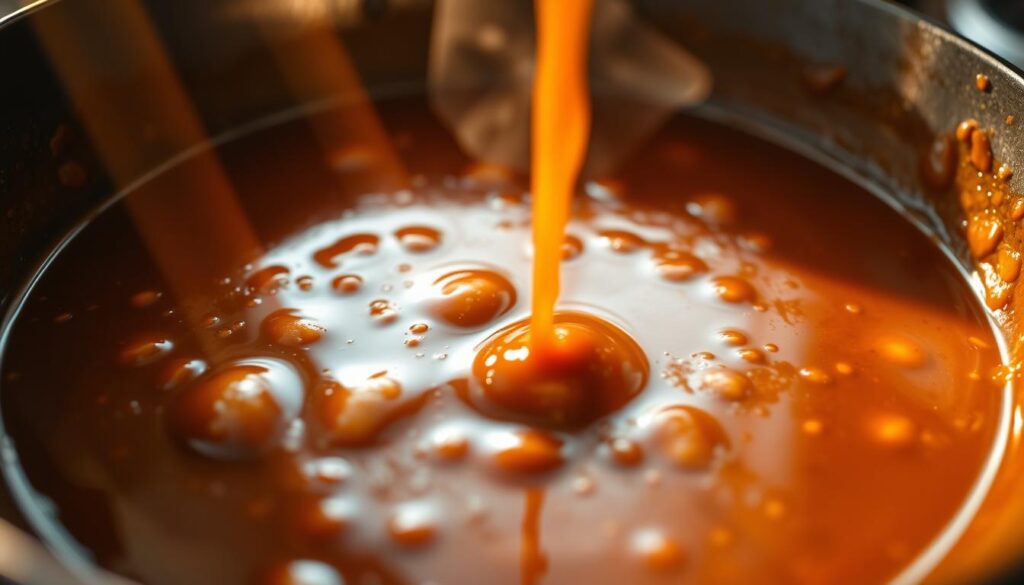
Keep the sauce in a small bowl near the stove. Pour it at the exact moment the noodles loosen and gloss. Optional MSG can boost savoriness. Finish off heat with a tiny drizzle of sesame oil for aroma.
“A little sauce goes a long way—aim to coat, not drench.”
| Ingredient | Function | Typical Amount |
|---|---|---|
| Light soy | Primary salinity | 2 tablespoons |
| Dark soy | Color and depth | 1 teaspoon |
| Oyster sauce | Umami richness | 1 tablespoon |
| Sugar | Round flavors | 1/2 teaspoon |
| Shaoxing wine (or dry sherry) | Complexity, slight sweetness | 1 tablespoon |
Pro tip: Taste and adjust in small increments. Set aside extra sauce for a quick splash if noodles need more sheen at the end.
Step-by-Step: Stir-Fry Your Chow Fun Recipe
Work fast and keep the pan hot. Preheat a wok or large nonstick pan over high heat until it just begins to smoke. Add a neutral oil to the pan so you get quick searing and minimal sticking.
High-heat setup and sear
Sear the beef in a single layer 1–2 minutes per batch. Remove the meat so it rests while you build flavor.
Char noodles and build layers
Add the noodles to the hot pan and pour the soy mixture around the pan edge so it caramelizes on contact. Briefly char the strands, then remove to avoid tearing.
Vegetables, final toss, and finish
Sauté onions and garlic quickly, then add scallions and bean sprouts for a bright crunch. Return noodles and beef, pour in the prepared sauce, and toss over high heat for 2–3 minutes until glossy and absorbed.
Finish off heat with a small drizzle of sesame oil and serve immediately so the rice strands stay bouncy.
| Step | Minutes | Why it Matters |
|---|---|---|
| Preheat pan & add oil | 1–2 | Ensures quick sear and prevents sticking |
| Sear beef | 1–2 | Locks juices and avoids overcooking |
| Char noodles | 30–60 sec | Builds color and mild smoky notes |
| Toss with sauce | 2–3 | Coats evenly and melds flavors |
“Give each element its moment in the pan—speed and heat are your allies.”
Wok Hei at Home: Heat Management, Oil Choices, and Batch Cooking
Heat management and a neutral high-smoke-point oil turn a simple stir into a restaurant-style finish. You’ll start by preheating a wok or large pan until it gives off a faint wisp of smoke. That visual cue tells you the surface is ready to sear, not steam.
Neutral oils like avocado, canola, or vegetable oil stand up to high temperatures and won’t clash with soy and oyster flavors. Avoid regular olive oil—the lower smoke point and distinct flavor can interfere with the final plate.
Space matters. If your pan is crowded, noodles and beef will release moisture and steam instead of browning. Cook in batches so each strand and strip gets direct contact with the hot surface.
Workflows that preserve texture and flavor
Keep sauce measured and within reach so you can add it quickly without dropping the pan temperature. Render fat from beef first to flavor the pan, then remove the meat and char noodles in the cleared surface.
- Preheat the pan, then add oil and wait for a quick sizzle.
- Split beef and noodles into batches on small pans to preserve sear.
- Do not cover the pan—airflow helps wok hei form and keeps sprouts crisp.
“Use visual cues—wisps of smoke and a sharp sizzle—to know when to start; patience in preheat pays off.”
Variations You’ll Love: Beef Chow Fun and Local-Style Vegetable Chow Fun
Choose your direction and then match ingredients so the texture of the noodles stays central.
Beef classic: Cantonese dry stir-fry with extra wide rice
For the classic beef chow fun, use extra wide rice noodles and thinly sliced beef. Keep the sauce light so the pan char shows through.
Layer onions and scallions early to build sweetness. Finish with bean sprouts for snap.
Local-style (Hawaii): vegetable-forward, peppery, garlicky
The local-style version leans into soy, oyster, and lots of black pepper. Add cabbage, carrots, and plenty of garlic.
Use a touch more soy sauce and oyster sauce so vegetables shine without making the plate soggy.
Add-ins and swaps: meats, extra veg, and simple tweaks
You can stir in char siu or Spam for a meaty boost without changing technique. Extra bean sprouts or onions work, too.
Keep tossing gentle to avoid breaking noodles. Choose lean beef or go meatless to control fat and keep the dish light.
“Adjust sauciness by style: lighter and drier for Cantonese, more saucy and pepper-forward for local versions.”
- Classic: extra wide rice, seared beef, light sauce, wok char.
- Local-style: soy + oyster, garlic, black pepper, cabbage, carrots.
- Add-ins: char siu or Spam, extra sprouts, more onions.
- Technique: gentle tosses, adjust vegetables to taste, protect noodle texture.
Storage, Reheating, and Make-Ahead Tips
Proper storage and a quick reheat will bring rice noodles back to life without turning them mushy.
Short fridge time for best texture. Store leftovers in airtight containers and plan to eat them within 1–3 days. Rice noodles firm up in the fridge, and local-style versions usually taste best within 1–2 days.
Reheat in a hot pan with a small splash of water, tossing just until the strands loosen and regain a soft chew. That quick heat-and-moisture boost takes only a minute or two and prevents tearing.
Alternatively, microwave covered with a damp paper towel in short bursts. Add a teaspoon of water between bursts to create steam and revive texture without drying the food.
Keep sauces light during reheating—noodles absorb seasoning fast when hot. Avoid over-heating; extended time makes strands mushy or causes them to break apart.
- Store in airtight containers for 1–3 days.
- Reheat in a hot pan with a splash of water; toss for a minute.
- Microwave covered with a damp towel in short bursts.
- Make ahead by marinating beef, pre-slicing vegetables, and prepping sauce so you can cook fresh in minutes.
- Add bean sprouts at the end to keep them crisp.
“Reheat only what you plan to eat and serve immediately to preserve sheen and springy texture.”
Conclusion
With a little prep and high heat, your wide rice noodles and seared beef become a restaurant-quality meal.
You’ve learned to tenderize beef quickly, handle extra wide rice noodles so they keep their bite, and mix a compact sauce that coats without drowning the strands. Work fast in a hot pan, stage ingredients nearby, and use just enough oil to get that light char and glossy finish.
Choose the Cantonese dry style for a wok-charred, savory plate, or lean into the Hawaii local-style with vegetables, oyster accents, and bold black pepper. Both approaches use the same core techniques and pantry ingredients, so you can switch between them easily.
Use this as your go-to beef chow fun guide: time your sears, measure the sauce, and add bean sprouts at the end for crunch. Respect the noodle prep, heat, and balance of seasoning, and you’ll serve a memorable dish in minutes.

